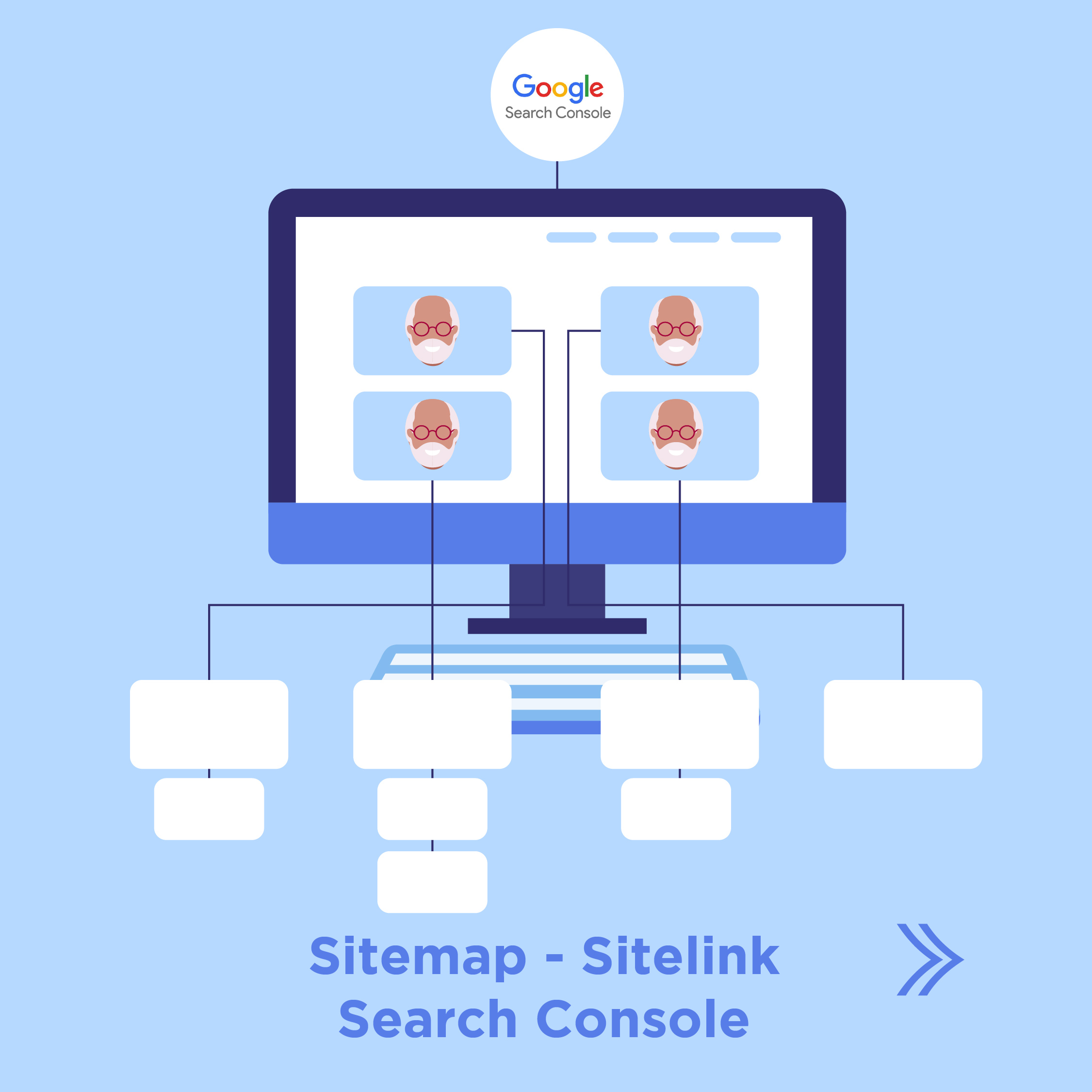Sitemap, sitelink and search console, what are they?

April 21, 2021
lsandil
The Search Console
This is a Google tool that allows you to better control the presence of your site in search results. More concretely, the Search Console helps you see your site through the eyes of Google and its robots. Therefore, you must first be familiar with how the American giant works. To learn more about the exploration, indexing and distribution phases, we invite you to read our article on Google searches before continuing your reading.
Anyway, if it is not mandatory to use the Search Console to appear in the search results, it will greatly help you to improve your natural referencing. Indeed, this tool allows you to obtain a large number of information: origin of your traffic, quality, duration and frequency of display, click rate, queries, etc. In addition, the search console also highlights the various problems and incidents that can penalize your SEO: indexing, spaming, AMP, ergonomics, etc. To sum up, you can think of it as the dashboard of your website. Optional, but highly recommended.
The Sitemap
Here again, we are talking about a tool that can greatly help your SEO if it is properly used. The sitemap, as its name suggests, is nothing more than a map of your website. It is in fact a file that is supposed to contain a maximum of information about your site, its tree structure, its page depth, the files it contains, the last update date, the frequency of modification of its content, etc. Think of it as a smart GPS that you would provide to Google’s robots when they arrive on your site, facilitating their exploration.
Once again, the sitemap is not mandatory. In many cases, it is even almost useless. If your site has only a few pages and they allow easy navigation from one to another, or if you have created it through a hosting service such as Blogger or Wix, which usually generate one automatically. On the other hand, for a complex site, voluminous, with a large number of pages and whose internal links are not perfectly optimized, it is then more than recommended to create a sitemap. Another case should also be seriously considered: if you have a site with a lot of media content, images or if your content is supposed to appear in Google news.
The Sitelinks
When you do a search on Google, the results show a list of links. The search engine sometimes shows sponsored links, which are followed by sites that are naturally referenced. For each link, there is usually three pieces of information:
- The exact address of the site, which is called the URL ;
- The title of the page, which corresponds to the title tag ;
- A brief description of the page, which corresponds to the metadescription ;
However, it sometimes happens that for some queries, the results show a site with what are called sitelinks: these are additional links that come in addition to the main link associated with the search result. They are automatically detected by Google’s algorithm, which selects between 2 and 6 links from your site to help users find the information they are looking for more quickly. In addition to significantly increasing click-through rates, lowering bounce rates and thus facilitating the experience of your visitors, sitelinks can then clearly improve the SEO of your site. And by the way, both the architecture of your site and the presence of a good sitemap can help Google to identify and propose sitelinks. As always, everything is … linked.